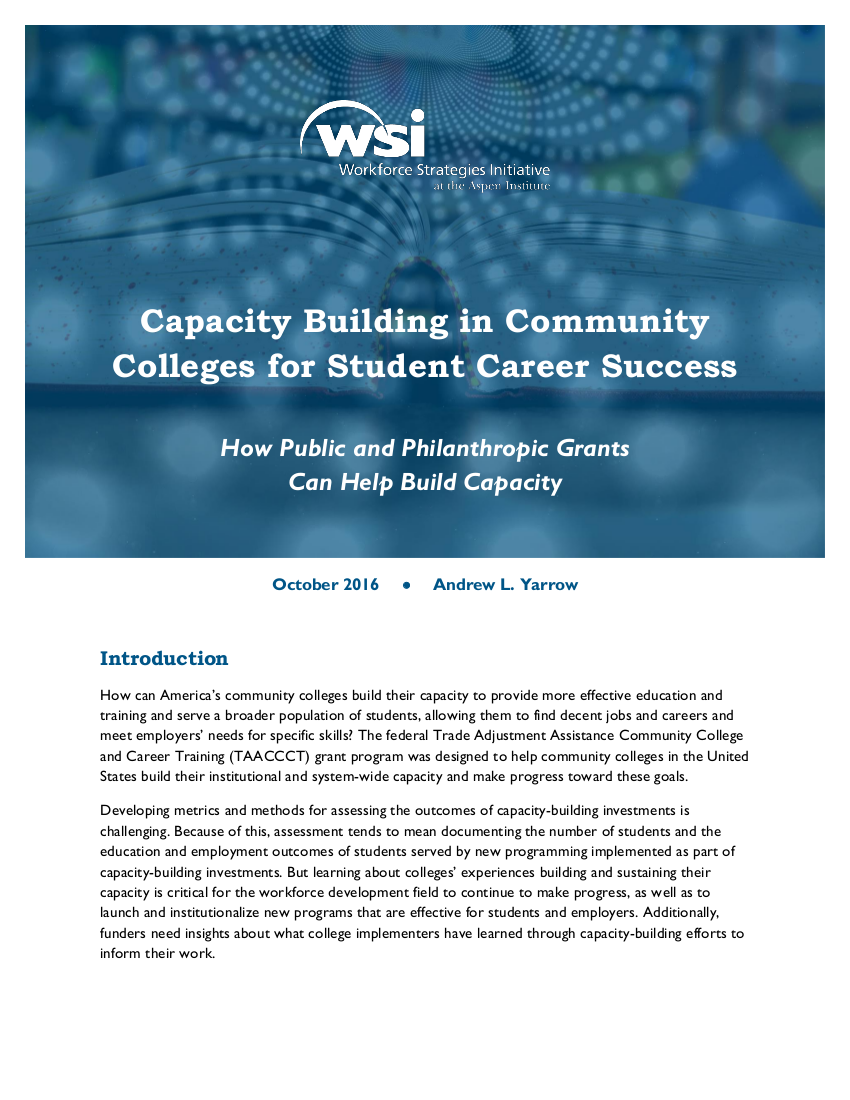How can America’s community colleges build their capacity to provide more effective education and training and serve a broader population of students, allowing them to find decent jobs and careers and meet employers’ needs for specific skills? The federal Trade Adjustment Assistance Community College and Career Training (TAACCCT) grant program was designed to help community colleges in the United States build their institutional and system-wide capacity and make progress toward these goals.
Developing metrics and methods for assessing the outcomes of capacity-building investments is challenging. Because of this, assessment tends to mean documenting the number of students and the education and employment outcomes of students served by new programming implemented as part of capacity-building investments. But learning about colleges’ experiences building and sustaining their capacity is critical for the workforce development field to continue to make progress, as well as to launch and institutionalize new programs that are effective for students and employers. Additionally, funders need insights about what college implementers have learned through capacity-building efforts to inform their work.
Capacity Building In Community Colleges For Student Career Success provides a short summary of key themes discussed at a meeting to learn about community colleges’ experiences with TAACCCT-funded capacity-building work and highlight areas that merit further exploration, convened by the Aspen Institute Workforce Strategies Initiative (AspenWSI), together with Achieving the Dream (ATD), on April 18, 2016, in Washington, DC. The meeting brought together nearly 40 community-college leaders, US Department of Labor and other federal agency officials, and workforce development scholars and practitioners. The statements in this document reflect an overview of points raised by participants at the meeting as they discussed their experiences with implementation of work conducted through TAACCCT.
Notably, the discussion was launched with a review of four “promising practices” briefs, published by AspenWSI in 2016. The briefs describe how colleges in the Credentials to Careers (C2C) TAACCCT consortium used TAACCCT grants to build institutional capacity to better serve students. The C2C consortium, led by Northern Virginia Community College (NOVA), is one of the 26 TAACCCT multi-state consortium grantees around the country and is made up of six other community colleges that have invested their grant funds to provide Information Technology (IT) and other STEM-H training and credentials. The lessons from the promising practices briefs helped to inform many of the discussions during the meeting.



